11 Literary Friendships We Can Learn From
A friendship between two great creative minds can sometimes yield a bounty of great work, inspiration and mutual admiration for one other. Of course, it can just as easily spur on jealousy and hurt feelings. Both have been the case in real-life friendships between some of the biggest, most notable giants of the literary world. While we might hope these connections would always work out for the best, there are lessons to be learned from even the most tumultuous of relationships. Whether you’re a writer yourself, a college student or just love learning about literature, take a look at these great bookish bromances for some lessons on how to be a good friend to your nearest and dearest in life.
1. Ernest Hemingway and F. Scott Fitzgerald
Already a successful writer when he met Ernest Hemingway in 1925, Fitzgerald was familiar with the greenhorn’s work and eager to help him move forward. Hemingway was not quite so charmed by his eager, self-appointed mentor — who was a bit of a sycophant and a drunk — but benefited greatly from the connections and help he offered. For a time, the two were close friends, working and socializing together in the literary heyday of pre-war Paris. Yet things were not meant to last between the two, as Hemingway could simply not abide Fitzgerald’s rocky marriage to Zelda, rampant alcoholism (a bit ironic, don’t you think?) and his lack of writing discipline. Hemingway became increasingly critical, and his public belittling of the man and his work, especially his unflattering portrait in A Moveable Feast, severed their friendship. Close friends say Fitzgerald was always hurt by Hemingway’s rebuff, but the other man’s opinions never softened — not even after the former’s death in 1940. The lesson? Choose your friends carefully — they may not always respect you as you do them.
2. C.S. Lewis and J.R.R. Tolkien
It only makes sense that two writers, both famous for creating immersive fantasy worlds, would find common ground in real life and strike up a friendship. That’s just what happened between these two men, who met at an Oxford faculty meeting in 1926 and quickly discovered their mutual love for all things mythical. It was this friendship that helped spur both authors to write their now-famous trilogies. They bonded over their experiences in WWI, the loss of their parents and the desire to create make-believe places to escape from these deeply emotional pains. While always marked by differences in opinion, their friendship grew more distant as Lewis became more successful. Both personal and professional disagreements, including Tolkien’s hatred for the Narnia series, were to drive them apart. This unfortunately severed a close connection that had served the men well for many years. The lesson? Sometimes keeping your opinions to yourself can save a friendship.
3. William Wordsworth and Samuel Taylor Coleridge
Two of the biggest names in 18th century poetry, Wordsworth and Coleridge often held very different ideas about what constituted great verses, but that didn’t stop the duo from forming a strong friendship. The two met in 1795 and would go on to publish a joint volume of poetry titled Lyrical Ballads, a turning point in their careers and the larger Romantic poetry movement. The two were to remain close friends for many years, working together, influencing and evolving each other’s work and helping push forward their philosophies about writing. The two idolized each other, with each dedicating a poem to the other. Yet there were disagreements between the two (largely about Wordsworth’s poetic ideals) and their relationship was further strained by Coleridge’s opium addiction and resulting unstable personality. Eventually, they would grow apart as Wordsworth’s fame grew and Coleridge sank further into addiction, ending with the latter’s death from a heart attack in 1834. The lesson? Don’t do opium– it will ruin your career and your friendships, even if it does inspire some crazy poetry.
4. Philip Larkin and Kingsley Amis
While they might not be household names today, these poets and writers were some of the top British literary figures during their lifetimes. They were also friends from their days at Oxford, showing each other their poetry and prose and providing encouragement towards what would become successful literary careers. Larkin helped Amis write his work Lucky Jim (which is dedicated to him), and the two frequently wrote of and talked about the other in popular media. The two remained great friends throughout their lives, and with Larkin’s death Amis lamented that they would no longer be able to share, critique and promote each other’s work. The lesson? True friendships are born out of mutual respect and a desire to see the other succeed, even when you’re both competing in the same field.
5. Jean-Paul Sartre and Albert Camus
Key figures in existentialism, Camus and Sartre met in June of 1943 at the opening of Sartre’s play The Flies. The two immediately hit it off, and when Camus moved to Paris they spent hours sharing their ideas, passions and even ridicule of other literary figures. Already having read each other’s writing before they met, their friendship was cemented within the first few months of their meeting, a relationship that would be filled with mutual admiration and respect. Yet a few years into their friendship, cracks began to show and the differences between the men came into stark focus. A battle over a seemingly innocuous political idea formed the downfall of their relationship. Sartre’s literary magazine published a negative review of Camus’s book The Rebel, and Camus felt it was a personal attack on him. Though the review was not written by his, he still responded with an open letter attacking him. Neither man willing to back down and neither willing to reflect on the qualities which had made them so eager to be friends from the beginning, everything dissolved. The lesson? Sometimes it’s better to forgive and forget than to try and win an argument– especially if it is pretty trivial in the grand scheme of things.
6. George Sand and Gustave Flaubert
The friendship between George Sand and Gustave Flaubert is an unexpected one. The two held fundamentally different views on just about everything under the sun. Yet they didn’t let this stand in the way of their friendship, and instead worked around their differences with a great deal of understanding. One striking example of this is that Flaubert sent a draft of A Sentimental Education to Sand to read, even though it mocked everything she stood for politically and religiously. Sand chastised him for being so harsh, and despite his desire to publish the politically charged novel as it was, he promised to remove anything she found spiteful — and he did. The two wrote numerous letters to one another which readers can peruse online — a great archive of their friendship. The lesson? A person is much more than their political and cultural beliefs. Your best friend might just be your exact opposite.
7. Ralph Waldo Emerson and Henry David Thoreau
Emerson was impressed with Thoreau from the their first meeting and saw the younger man as a worthy protege. Thoreau, likewise, saw Emerson as a potential guide, mentor and friend, and though the two didn’t always get along they would form a friendship that lasted for decades. In fact, if it were not for the influence of Emerson, Thoreau may not have pursued writing as a career at all. During their relationship, Emerson found Thoreau work, hiring him as a live-in handyman and gardener and eventually helping him obtain a teaching position. The famous Walden Pond, where Thoreau would write one of his most well-known works, was on land Emerson owned. It was Emerson who would push Thoreau to self-publish and help him get the recognition and success he deserved. Sadly, the two had a falling out in 1849, but they still remained on speaking terms. Emerson wrote the eulogy given at Thoreau’s funeral and would continue to refer to him as his best friend until his death 18 years later. The lesson? The love and admiration of friendship doesn’t end, even if participants have to part ways.
8. Lord Byron and Percy Bysshe Shelley
Introduced by a family friend, Byron and Shelley were instant friends, and even rearranged their summers so they could spend them together as much as possible. Their friendship proved beneficial to the creative work of both writers. Byron was influenced by Shelley’s intellectualism, and some of his best works might not have been completed without his influence. Shelley was inspired to create a flurry of work in the time he spent with Byron, even borrowing some of his poetic forms in the works he created. While the two had their differences, Shelley made light of them by using them as poetic fodder for his work “Julian and Maddalo.” Their friendship was only to last six years, however, but not because the men had a falling out. Shelley drowned in 1882 when his ship, ironically named Don Juan after Byron’s famous poem, capsized and sank. Byron died two years later. The lesson? The right friendships can inspire you to be better (whether creatively or personally) than you would have been on your own.
9. Mario Vargas Llosa and Gabriel Garcia Marquez
The friendship between Peruvian novelist Mario Vargas Llosa and Colombian writer Gabriel Garcia Marquez devolved into one of the most bitter and acrimonious literary feuds in 1976. At a movie premiere in Mexico City, Llosa punched Marquez in the face for reasons that are still a bit unclear today, giving the victim a black eye and severing their friendship. Previously, the two had been close friends, with Marquez even being the godfather to Llosa’s son Gabriel, who was also named after him. While they differed politically, most believe that is was more than likely a woman who split them up. Earlier that year, Marquez had advised Llosa’s wife to divorce him after he took off with a Swedish stewardess. While this advice alone might have been enough to set him off, there is some speculation that Marquez may have consoled her in other ways as well. The two were thought to have finally reconciled in 2007, 31 years later, after agreeing to work on a book project together. The lesson? No matter how long it’s been, it’s never too late to mend a broken friendship.
10. Nathaniel Hawthorne and Henry Wadsworth Longfellow
While Hawthorne’s most famous relationship may be his bitter feud with writer Herman Melville, his friendship with Longfellow is a much more inspirational story. The two men had a lot in common. They came from same area, had an early relationship with sea, found success and publication at an early age and even attended the same college and took classes together. Yet despite knowing of each other in school, it was not until much later when they became friends. In 1837, Hawthorne sent his novel Twice Told Tales to be reviewed by Longfellow, then the more successful of the two. Longfellow agreed, and wrote a glowing review of the work, sparking a lifelong friendship. It was not only Hawthorne who benefited from the literary advice and inspiration, however. It was from Hawthorne that Longfellow heard the story about which he composed one of his favorite poems, “Evangeline.” Ironically, Hawthorne’s praise of this same poem got him fired– a mark of the loyalty and love the friends had for one another. Hawthorne passed away in 1864, and Longfellow was not only a pallbearer at his funeral, but wrote him a farewell poem. The lesson? The best things in life are better when shared with a friend.
11. Emily Dickinson and Thomas Wentworth Higginson
In 1862, Dickinson saw an open letter Higginson had printed in the Atlantic Monthly directed at young writers and wrote back to him directly, asking him to read and critique her poetry. The two developed a lifelong relationship, with Dickinson sending over 70 letters and 100 poems to her mentor. The two were an odd match: Dickinson was a reclusive, shy poet, while Higginson made a name for himself as a fiery abolitionist, minster, war hero and women’s right activist. Though Higginson did not press Dickinson to publish during her lifetime, after her death he helped bring her work into print, even co-editing a volume of her poems which was well-received by the public– a task Dickinson would most likely have been glad to leave to such a close adviser. The lesson? Sometimes inspiration, a confidant and a friend come in unexpected packages.
* Today’s article is courtesy of accreditedonlinecolleges.com

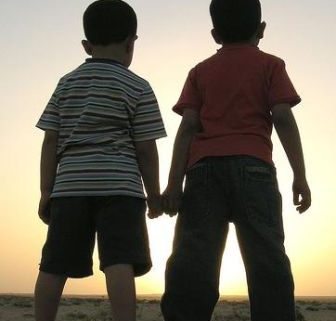
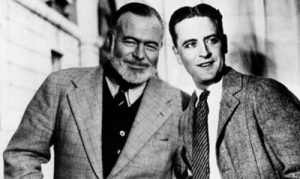
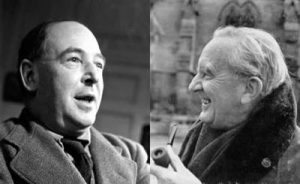
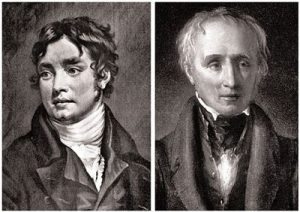
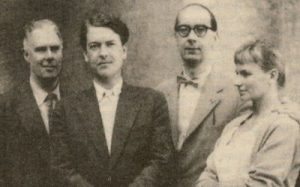
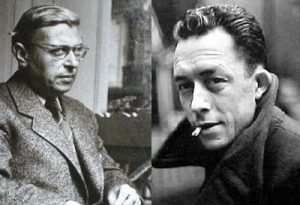
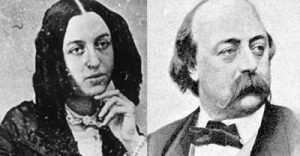
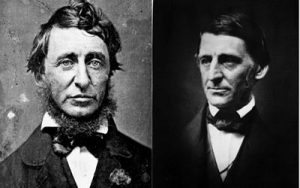
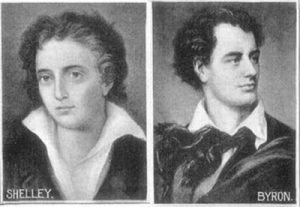
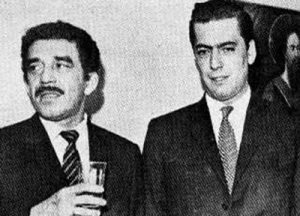
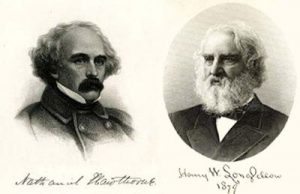
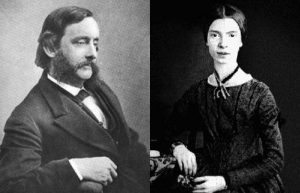



Can’t help thinking Shelley and Byron look like Matt Damon and Ben Afflack.
How inspiring to read something like this early in the a.m. I learned early on to not discuss politics or religion with other writer friends, most of them are so passionate about these subjects and often at odds with how I feel. That way I keep my friends.
There is something to be said about finding inspiration and camaraderie from your peers in the lit biz. It should also be noted that Hemingway also befriended and later trashed Gertrude Stein.
What a great post, Lee. I knew about some of these literary friendships, but others were new to me. As PJ said, this is a keeper.
How wonderful to have a friend to share passions with…even if for a short time.
Amen!!!
That’s a keeper.